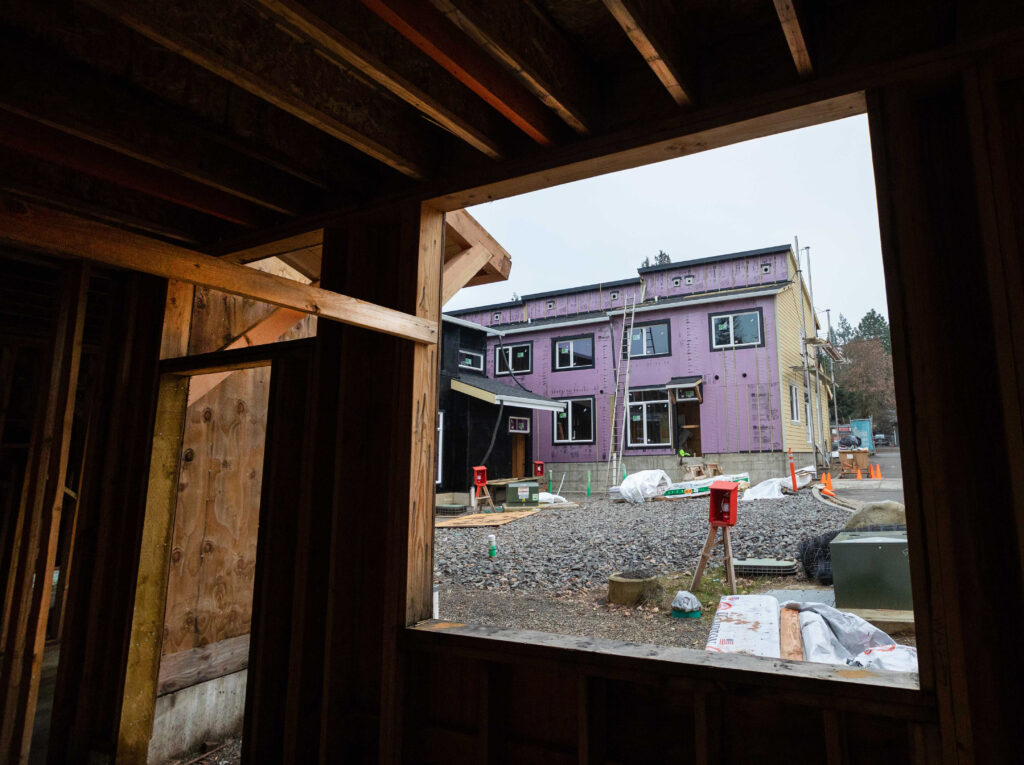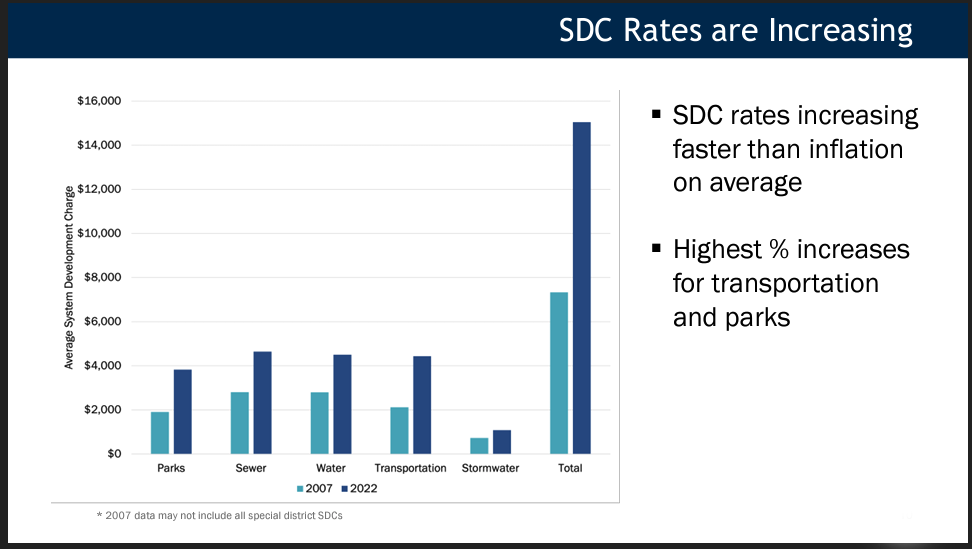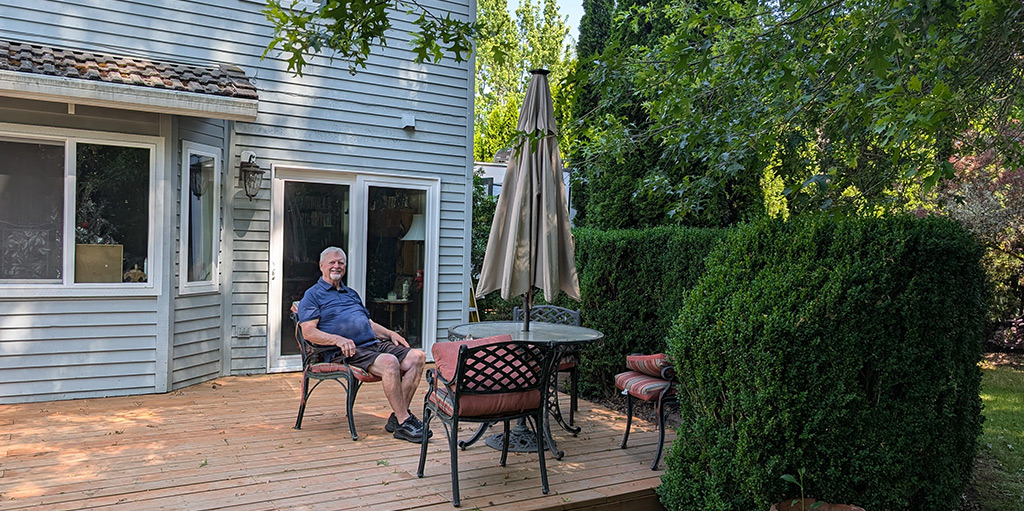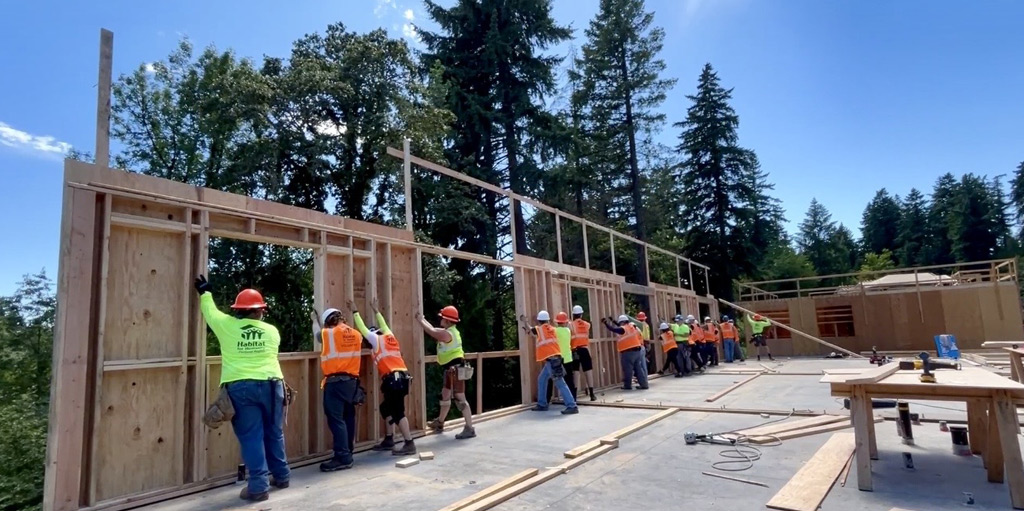
System development charges (SDCs)— those one-time fees tacked onto new construction projects — have become a staple for local governments across Oregon.
Faced with declining revenue from state and federal sources, and Oregon’s limit on property taxes, cities, counties, and special districts lean on these charges to fund basic systems and infrastructure. In fact, the average increase in SDCs for a single-family home in Oregon has more than doubled in the past 15 years — a rate surpassing even the skyrocketing costs of construction itself.
Between 2006 and 2021 construction costs increased 60%. Recent years have brought an onslaught of compounding expenses, with inflation, rising interest rates, supply chain shortages, pandemic-related delays, and labor scarcity. As it becomes increasingly difficult to balance housing construction budgets, SDCs have come under scrutiny.

The state of Oregon allows SDCs to fund five types of infrastructure services: parks, transportation, sewer, stormwater, and water. But local jurisdictions have broad discretion in setting SDC rates.
A recent legislative report found that the average SDC total is $15,000 to $16,000 per unit, but SDC costs can reach up to $50,000 per unit depending on location. For example, information compiled by the Home Builders Association of Metropolitan Portland shows a developer in West Linn would pay $34,373 in SDCs per home, while one in Fairview would pay only $7,594. This becomes one of many expenses that can influence the cost of housing.
Myriad factors contribute to rising rents and home prices, making it difficult to parse out direct causal relationships. However, higher SDC rates are correlated with communities producing larger and more expensive housing. On the other hand, middle housing (such as townhomes, cottage clusters, or triplexes) tends to be disproportionately impacted by SDCs, meaning that SDCs are a larger share of the overall project cost. For example, Habitat Portland Region has completed townhome developments where SDCs exceed the per unit cost of land. SDCs can be the critical difference that makes an affordable sales price hard to pencil out.
How can cities, counties, and special districts structure SDCs to promote healthy and inclusive growth?
Waivers for affordable housing: Some districts, such as Portland and Lake Oswego, waive SDCs for affordable housing development. As the housing crisis worsens, some elected officials are recommending waiving SDCs for all housing construction.
Deferral: Other districts defer, or are considering a deferral policy, for affordable housing or all housing. Instead of paying for SDCs when permits are issued, a deferral allows the developer to pay SDCs when the homes are ready for occupancy. This reduces the costs the developer must finance up front, reducing the amount of interest paid on a project.
Tailor to incentivize development: A third, complementary approach, is to tailor SDCs to reflect the actual impact on systems and to incentivize urban planning efficiencies that promote healthy growth for people and the environment. Higher density and infill housing makes use of existing systems, whether sewer, transportation, stormwater, or parks. Middle housing on a city lot should have reduced SDCs as compared to a brand-new subdivision on a former greenfield with no existing infrastructure. Cities could also tailor SDCs to incentivize affordable housing, or pro-rate SDCs based on the sales price.
Affordable housing is infrastructure
There is a growing consensus that affordable housing is a fundamental component of the infrastructure in any healthy, thriving, diverse community. Communities aren’t viable if people are living on the street, and front-line workers are couch-surfing or commuting for hours. Rather than framing affordable housing as a burden or cost to systems, such as parks, stormwater, or transportation, we should see housing as a complementary and equally vital system — an essential community asset.
Through our partnership with Proud Ground, Habitat for Humanity Portland Region homes are held in a community land trust. The public subsidy stays with the home, and it is affordable for future homeowners and generations. Housing built for lasting affordability should be exempt from SDCs, not just because affordable housing is sorely needed and increasingly hard to finance, but also because — like a sewer, road, or park — it is essential to the long-term livability and viability of our communities.
Sources:
Oregon System Development Charges Study: Why SDCs Matter and How They Affect Housing (December 2022), available at: https://www.oregon.gov/ohcs/development/Documents/Oregon%20SDC%20Study_FinalReport_121422.pdf
Home Builders Association of Metropolitan Portland, Multi-Family Rates by Jurisdiction (2020), available at: https://www.hbapdx.org/uploads/1/1/6/8/116808533/2020_sdc_chart_-_multi-family.pdf


